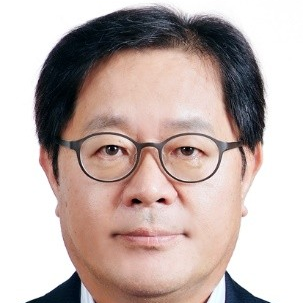State-of-the-Art Polymer Science and Technology in Korea (2022,2023)
A special issue of Polymers (ISSN 2073-4360).
Deadline for manuscript submissions: closed (31 December 2023) | Viewed by 7180
Special Issue Editors
Interests: polymer synthesis; polymerization catalysis; bionanotechnology; hyperbranched polymers; polypeptides; thermoplastic elastomers
Special Issues, Collections and Topics in MDPI journals
2. Department of Polymer Engineering, Graduate School, Chonnam National University, 77 Yongbong-ro, Buk-gu, Gwangju 61186, Republic of Korea
Interests: conducting polymers; nanoparticles; composites; sensors; electrochemistry
Special Issues, Collections and Topics in MDPI journals
Special Issue Information
Dear Colleagues,
The Polymer Society of Korea was founded by 180 attendants on October 8, 1976. About 200 members participated in the first annual meeting to present 19 papers. As of today, the society consists of 4 local sections, an advisory council, 7 operation committees, and officers (including a president, a chief vice president, 5 vice presidents, 2 auditors, a managing director, a general director, 49 ordinary directors, and 22 operating directors). There are now 4,500 total members of the society. In 2019, more than 4,000 members participated in the biannual meetings and more than 2,000 papers were presented. The Polymer Society of Korea aims to contribute to the development and propagation of science and technology of polymer-related chemistry, physics, biology, and engineering; thereby, the Polymer Society of Korea aims to promote polymer science and the polymer industry. The field of polymer science represents one of the most active and multidisciplinary research areas in Korea. Material scientists, chemists, physicists, and engineers are committed to promoting the scientific and technological advancement of polymer materials through a variety of research and development efforts at the service of the Polymer Society of Korea. This field includes polymer synthesis, functional polymers, polymer processing/composites, polymer structures and properties, molecular electronics, biomedical polymers, colloid and molecular assembly, and elastomer and fiber technologies. Examples of the contributions of Korean research to the field of polymer science can be easily found throughout global top journals and conferences.
This Special Issue is devoted to the development of polymer science research in Korea. It seeks to compile original articles, review articles, and state-of-the-art research papers. Research topics which will be considered for publication include, but are not limited to, the following:
- Polymer synthesis;
- Functional polymers;
- Polymer processing/composites;
- Polymer structures and properties;
- Molecular electronics;
- Biomedical polymers;
- Colloid and molecular assembly;
- Elastomers and fibers.
The only restriction for this Special Issue is that the main part of the study has to have been conducted in Korea or by Korean researchers.
We are expecting that this Special Issue will reflect the state of polymeric research in Korea and offer the rest of the world a bright insight into the progress that is being achieved in this field in Korea.
Prof. Dr. Il Kim
Prof. Dr. Hyeonseok Yoon
Guest Editors
Manuscript Submission Information
Manuscripts should be submitted online at www.mdpi.com by registering and logging in to this website. Once you are registered, click here to go to the submission form. Manuscripts can be submitted until the deadline. All submissions that pass pre-check are peer-reviewed. Accepted papers will be published continuously in the journal (as soon as accepted) and will be listed together on the special issue website. Research articles, review articles as well as short communications are invited. For planned papers, a title and short abstract (about 100 words) can be sent to the Editorial Office for announcement on this website.
Submitted manuscripts should not have been published previously, nor be under consideration for publication elsewhere (except conference proceedings papers). All manuscripts are thoroughly refereed through a single-blind peer-review process. A guide for authors and other relevant information for submission of manuscripts is available on the Instructions for Authors page. Polymers is an international peer-reviewed open access semimonthly journal published by MDPI.
Please visit the Instructions for Authors page before submitting a manuscript. The Article Processing Charge (APC) for publication in this open access journal is 2700 CHF (Swiss Francs). Submitted papers should be well formatted and use good English. Authors may use MDPI's English editing service prior to publication or during author revisions.
Keywords
- polymer synthesis
- functional polymers
- polymer processing/composites
- polymer structure and property
- molecular electronics
- biomedical polymers
- colloid and molecular assembly
- elastomers and fibers







